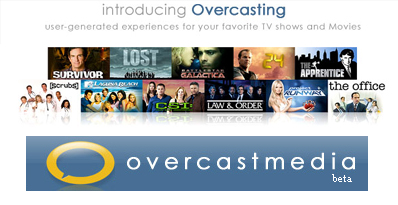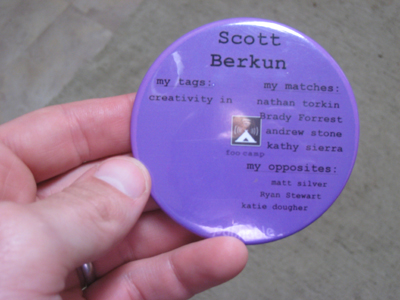How to write a book – the short honest truth
Every author I know gets asked the same question: How do you write a book?
It’s a simple question, but it causes problems. On the one hand, it’s nice to have people interested in something I do. If I told people I fixed toasters for a living, I doubt I’d get many inquires. People are curious about writing and that’s cool and flattering. Rock on.
But on the other hand, the hand involving people who ask because they have an inkling to do it themselves, is that writing books is a topic so old and so well trod by so many famous people that anyone who asks hoping to discover secret advice is hard to take seriously.
Here’s the short honest truth: 20% of the people who ask me are hoping to hear this – Anyone can write a book. They want permission. The truth is you don’t need any. There is no license required. No test to take. Your book idea is worth writing if you think it is. Writing, as opposed to publishing, requires almost no financial or physical resources. A pen, paper and effort are all that has been required for hundreds of years. If Voltaire, Marquis de Sade and Marina Nemat could write in prison, then you can do it in suburbia, at lunch, at work, or after your kids go to sleep. You will always find excuses if you want them and most people do. Why? Writing is work. No matter how smart you are or how great your idea is, you will have to put in the time and no one else can do it for you.
It helps to kill the magic: a book is just a bunch of writing. Anyone can write a book. It might be bad or be incomprehensible, but so what: it’s still a book and many published authors haven’t done any better.
Nothing is stopping you right now from collecting all of your elementary school book reports, a years worth of emails you wrote, or drunken napkin scribbles, binding them together at Kinkos for $20, slapping a title on the cover, and qualifying as an author. Want to write a good book? Ok, but get in line since most pro authors are still trying to figure that out too.
Writing a good book, compared to a bad one, involves one thing. More work. No one wants to hear this, but if you take two books off any shelf, I’ll bet my pants the author of the better book worked harder than the author of the other one. Call it effort, study, practice, or whatever you like. Sure there are tricks here and there, but really writing is a kind of work. I like this though: it means anyone who puts in enough time can actually write well. Some of our best writing comes from ordinary people from all walks of life.
Getting published. 30% of the time the real thing people are asking is how do you find a publisher. As if there wasn’t a phone book or, say, an Internet-thingy where you can look this stuff up (start with Jane Friedman’s website). Writers-market is literally begging to help writers find publishers. Many publishers, being positive on the whole idea of communication, put information on how to submit material on their website. And so do agents. The grand comedy of this is how few writers follow the instructions. That’s what pisses off all the editors: few writers do their homework.
The sticking point for most people who want to be authors is, again, the work. They want to hear a secret that skips over the work part. Publishers are rightfully picky and they get pitched a zillion books a day. It takes effort to learn the ropes, send out smart queries, and do the research required to both craft the idea for a book, and then to propose it effectively. So while writing is a rejection prone occupation, even for the rock-stars, finding a publisher is not a mystery. In fact the whole game is self-selective: people who aren’t willing to do the work of getting published are unlikely to be capable of the work required to finish a decent manuscript.
But that said – it’s easier today to self-publish than ever. People look down on self-publishing, but I don’t see why. When people buy books it’s not like they care who published them (“Oh, I don’t read Random House books, sorry”): they only care who recommended or reviewed the book. But again, our tragically unpopular companion, work, is required to self-publish so many prefer to keep asking writers how they got published instead of just doing it themselves. You can read what I learned from self-publishing the first time here (although the technology and options have improved since then).
Being famous and wealthy: Now this is the kicker. About 50% of the time the real thing people want to know is how to become a famous millionaire rock-star author person. As if a) I qualified, b) I could explain how it happened, or c) I’d be willing to tell.
First, this assumes writing is a good way to get rich. I’m not sure how this lie started but writing, like most creative pursuits, has always been a less than lucrative lifestyle. Even if a book sells well, the $$$ to hour ratio will be well below your average corporate job, without the health benefits, sick days, nor the months where you can coast by without your boss noticing. These days people write books after they’re famous, not before. A book can help you gain professional credibility, but then it’s more of a marketing project than a writing project, isn’t it?
And if the only books you read are bestsellers, well, you have a myopic view of the publishing world. Over 100k books are published in the US annually, and few sell more than a few thousand copies. What causes books to sell may have little to do with how good a book is, as we’ve all been mystified by the abysmal bestsellers and surprised by amazing books few seem to know about. Either way, to justify the effort you’ll need reasons other than cash.
Discouraged yet? Here is the upside: I love writing books. I love reading books. Books have profound powers and they’ve changed my life so many times. Maybe the bittersweet challenge of chasing words into sentences suits you. If you want to do this you have my support. GO YOU. Sincerely. I am behind you. But thinking about writing isn’t writing. Talking about it isn’t either. Commit to 10 hours of effort (basically a weekend or two). Write an outline or even just a few pages of a chapter. Take a course that focuses on actual writing and getting feedback. If it feels hard but rewarding, keep going. If it doesn’t, well I think you know.
Here are some practical next steps:
- The single best website to learn more about writing and publishing books – Jane Friedman
- How To Start a Book Project – specific advice for tackling a book sized effort.
- Is Your Book Idea Good? I’ll tell you here
- 28 Things No One Tells You About Publishing
- How To Get From An Idea To a Book – a bit harsh, and focused on publishing, but explains the steps and the time you’ll need
- Writing Hacks: Part 1 – Starting – What to do when the page is blank.
- Part 2 of ‘How To Write a Book’ is here, where I answer the best comments.
- Time-lapsed video of a writer writing an essay – amazing and revealing
- Confessions of a Self Published author – here’s what I learned from self publishing my last book.
- Writer’s Market. How to find a publisher for your written work (more good advice here).
- National Novel Writing Month – You must check this out.
- Or leave a comment below. I am, despite the curmudgeonly vibe, happy to answer thoughtful questions.
- Austin Kleon’s book writing flowchart
- Preview image credit
[Light editing: 10/7/2019, 2/4/2021]







